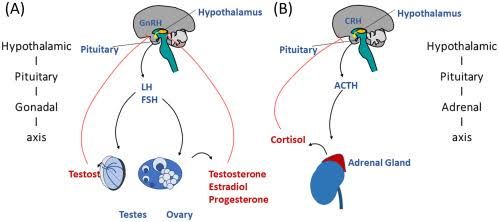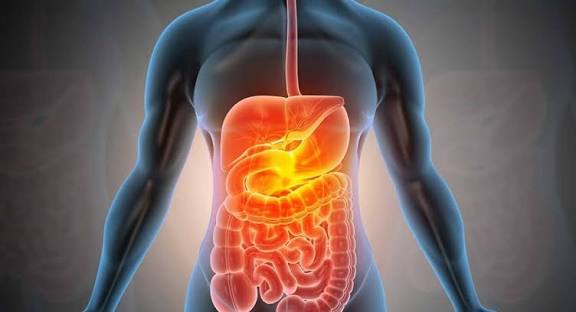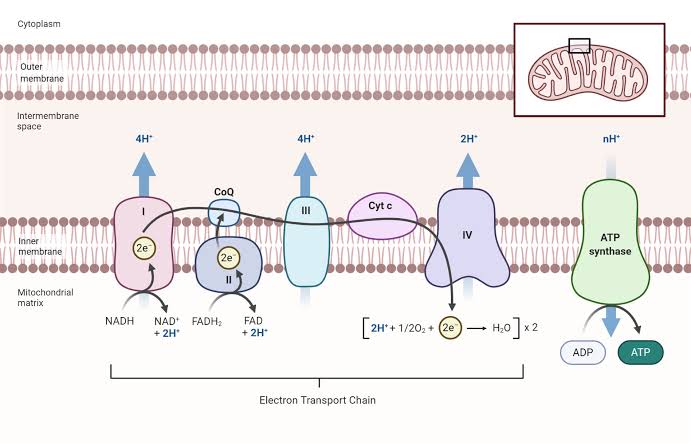
Biosynthesis of Steroid Hormones
The biosynthesis of steroid hormones is a complex biochemical process that primarily involves the conversion of cholesterol into various steroid hormones through a series of enzymatic reactions. This pathway is crucial for the production of hormones that regulate numerous physiological processes, including metabolism, immune response, and reproductive functions.
1. Starting Material: Cholesterol
Cholesterol serves as the central precursor for all steroid hormones. It is synthesized in the body from acetyl-CoA through a multi-step process involving several key enzymes. The primary sites of cholesterol synthesis include the liver, intestines, adrenal glands, and gonads (testes and ovaries).
2. Conversion to Pregnenolone
The first step in steroid hormone biosynthesis involves the conversion of cholesterol to pregnenolone. This reaction is catalyzed by the enzyme cytochrome P450scc (side-chain cleavage enzyme), which cleaves the side chain of cholesterol, resulting in pregnenolone. Pregnenolone is a pivotal intermediate because it can be further converted into various steroid hormones.
3. Pathways to Different Steroid Hormones
Pregnenolone can follow multiple pathways depending on the specific enzymes present in different tissues:
- Progestogens: In the ovaries and adrenal glands, pregnenolone can be converted into progesterone through the action of 3β-hydroxysteroid dehydrogenase (3β-HSD). Progesterone plays a critical role in regulating the menstrual cycle and maintaining pregnancy.
- Glucocorticoids: In the adrenal cortex, progesterone can be further metabolized to produce glucocorticoids such as cortisol. This pathway involves several enzymatic steps including hydroxylation reactions mediated by enzymes like 21-hydroxylase and 11β-hydroxylase.
- Mineralocorticoids: Another branch from pregnenolone leads to mineralocorticoids like aldosterone, which are essential for regulating sodium and potassium balance in the body. This pathway also occurs in the adrenal cortex and involves specific hydroxylation steps.
- Androgens and Estrogens: In gonadal tissues (testes and ovaries), pregnenolone can also be converted into testosterone (an androgen) or estradiol (an estrogen) through a series of transformations involving enzymes such as aromatase for estrogen synthesis or 17β-hydroxysteroid dehydrogenase for androgen synthesis.
4. Regulation of Steroid Hormone Biosynthesis
The biosynthesis of steroid hormones is tightly regulated by feedback mechanisms involving both hormonal signals and substrate availability. For instance, elevated levels of cortisol can inhibit further production by downregulating key enzymes involved in its synthesis through negative feedback on hypothalamic-pituitary-adrenal (HPA) axis signaling.
5. Excretion and Functionality
Once synthesized, steroid hormones are secreted into circulation where they exert their effects on target tissues by binding to specific receptors. They influence various biological processes such as metabolism regulation, immune function modulation, stress response management, and reproductive system control.
In summary, the biosynthesis of steroid hormones begins with cholesterol as a precursor, which undergoes enzymatic transformations to yield various hormones like progesterone, cortisol, aldosterone, testosterone, and estradiol through distinct pathways regulated by feedback mechanisms.
Role of Cytochromes P-450 in Steroidogenesis
Cytochromes P-450 (CYPs) are a superfamily of enzymes that play a crucial role in the metabolism of various substances, including steroids. These enzymes are monooxygenases, meaning they incorporate one atom of oxygen into organic substrates while reducing the other atom to water. In steroidogenesis, cytochromes P-450 are essential for the biosynthesis of steroid hormones from cholesterol.
Steroidogenic Pathways
Steroidogenesis primarily occurs in the adrenal glands and gonads, where cholesterol is converted into various steroid hormones through a series of enzymatic reactions. The process can be divided into two main pathways: the classical steroidogenic pathway and the backdoor pathway.
- Classical Steroidogenic Pathway
- In this pathway, cytochrome P-450 17A1 (CYP17A1) is particularly important. It catalyzes two key reactions:
- Hydroxylation: CYP17A1 hydroxylates pregnenolone at carbon 17, leading to the formation of 17-hydroxypregnenolone.
- Lyase Reaction: Following hydroxylation, CYP17A1 also cleaves the bond between carbons 17 and 20, producing dehydroepiandrosterone (DHEA) or androstenedione. These intermediates can then be converted into testosterone and estrogens.
- Other cytochrome P-450 enzymes involved in this pathway include CYP11A1, which initiates steroidogenesis by cleaving cholesterol to form pregnenolone, and CYP19A1 (aromatase), which converts androgens into estrogens.
- In this pathway, cytochrome P-450 17A1 (CYP17A1) is particularly important. It catalyzes two key reactions:
- Backdoor Pathway
- This alternative pathway bypasses some intermediates found in the classical pathway. It involves different reactions catalyzed by specific cytochromes P-450 that lead to dihydrotestosterone (DHT) production without passing through DHEA or testosterone.
- The backdoor pathway highlights the versatility of cytochrome P-450 enzymes in synthesizing steroids through different mechanisms.
Mechanism of Action
The catalytic activity of cytochromes P-450 involves several steps:
- Substrate Binding: The substrate (e.g., cholesterol or its derivatives) binds to the active site of the enzyme.
- Oxygen Activation: Molecular oxygen is activated within the heme group of the enzyme.
- Hydroxylation or Cleavage: Depending on the specific enzyme and reaction type, either hydroxylation occurs (adding an –OH group) or a carbon-carbon bond cleavage takes place.
Physiological Importance
The activity of cytochrome P-450 enzymes is critical for maintaining hormonal balance and regulating physiological processes such as metabolism, reproduction, and stress response. Dysregulation or mutations in these enzymes can lead to various endocrine disorders, including adrenal insufficiency and hormone-related cancers.
Conclusion
In summary, cytochromes P-450 are integral to steroidogenesis due to their ability to catalyze essential reactions that convert cholesterol into biologically active steroid hormones. Their diverse roles underscore their importance in both normal physiology and disease states.
Defects and Consequences of Congenital Adrenal Hyperplasia
Congenital adrenal hyperplasia (CAH) refers to a group of genetic disorders that affect the adrenal glands, which are responsible for producing essential hormones such as cortisol, aldosterone, and androgens. The most common form of CAH is caused by a deficiency in the enzyme 21-hydroxylase, which is crucial for the synthesis of cortisol and aldosterone. This deficiency leads to an accumulation of steroid precursors, resulting in excessive production of androgens.
Types of CAH
There are two main types of CAH: classic and nonclassic.
- Classic CAH: This form is typically diagnosed at birth or shortly thereafter. It can be further divided into:
- Salt-wasting CAH: Characterized by severe deficiencies in cortisol and aldosterone, leading to life-threatening adrenal crises due to electrolyte imbalances.
- Simple virilizing CAH: In this variant, there is sufficient aldosterone production but inadequate cortisol levels, resulting in excess androgen production without significant salt loss.
- Nonclassic CAH: This milder form often goes undiagnosed until later in childhood or adulthood. Individuals may present with symptoms related to excess androgen levels but generally maintain adequate cortisol and aldosterone levels.
Defects Associated with CAH
The primary defect in classic CAH is the lack of 21-hydroxylase activity due to mutations in the CYP21A2 gene. This enzymatic deficiency disrupts the normal pathway for steroid hormone synthesis:
- Cortisol Deficiency: Leads to impaired stress response, fatigue, low blood sugar levels, and potential adrenal crisis.
- Aldosterone Deficiency (in salt-wasting forms): Results in an inability to retain sodium and excrete potassium properly, causing dehydration, low blood pressure, and electrolyte imbalances.
- Excess Androgens: Elevated levels can cause virilization effects such as ambiguous genitalia in females at birth or early onset of puberty in both sexes.
In nonclassic CAH, while there is some enzyme activity remaining, it is insufficient to prevent elevated androgen levels. Symptoms may include hirsutism (excess body hair), acne, irregular menstrual cycles in females, and early sexual maturation.
Consequences of CAH
- Physical Consequences:
- In females with classic CAH, ambiguous genitalia may be present at birth due to high androgen exposure during fetal development.
- Both males and females may experience accelerated growth during childhood but potentially shorter adult height due to premature closure of growth plates from excess sex hormones.
- Nonclassic CAH can lead to symptoms like hirsutism and acne without significant physical anomalies at birth.
- Psychosocial Consequences:
- Individuals with visible signs of virilization may face psychological challenges related to body image and gender identity.
- There can be social stigma associated with atypical genitalia or secondary sexual characteristics that do not align with societal norms.
- Reproductive Health Issues:
- Both males and females with either form of CAH may face infertility issues due to hormonal imbalances affecting reproductive function.
- Females particularly may experience menstrual irregularities or amenorrhea due to elevated androgen levels.
- Adrenal Crisis Risk:
- Individuals with classic salt-wasting CAH are at risk for adrenal crisis during periods of stress (e.g., illness or surgery), which can be life-threatening if not treated promptly. Symptoms include severe vomiting, diarrhea, low blood pressure, hypoglycemia, and dehydration.
- Long-term Health Risks:
- Chronic exposure to high androgen levels can increase the risk for conditions such as polycystic ovary syndrome (PCOS) in women.
- There may also be increased risks for cardiovascular issues due to long-term hormonal imbalances affecting metabolism.
In summary, congenital adrenal hyperplasia results from genetic defects leading to hormonal imbalances that have significant physical, psychosocial, reproductive health consequences along with acute medical risks like adrenal crisis.







